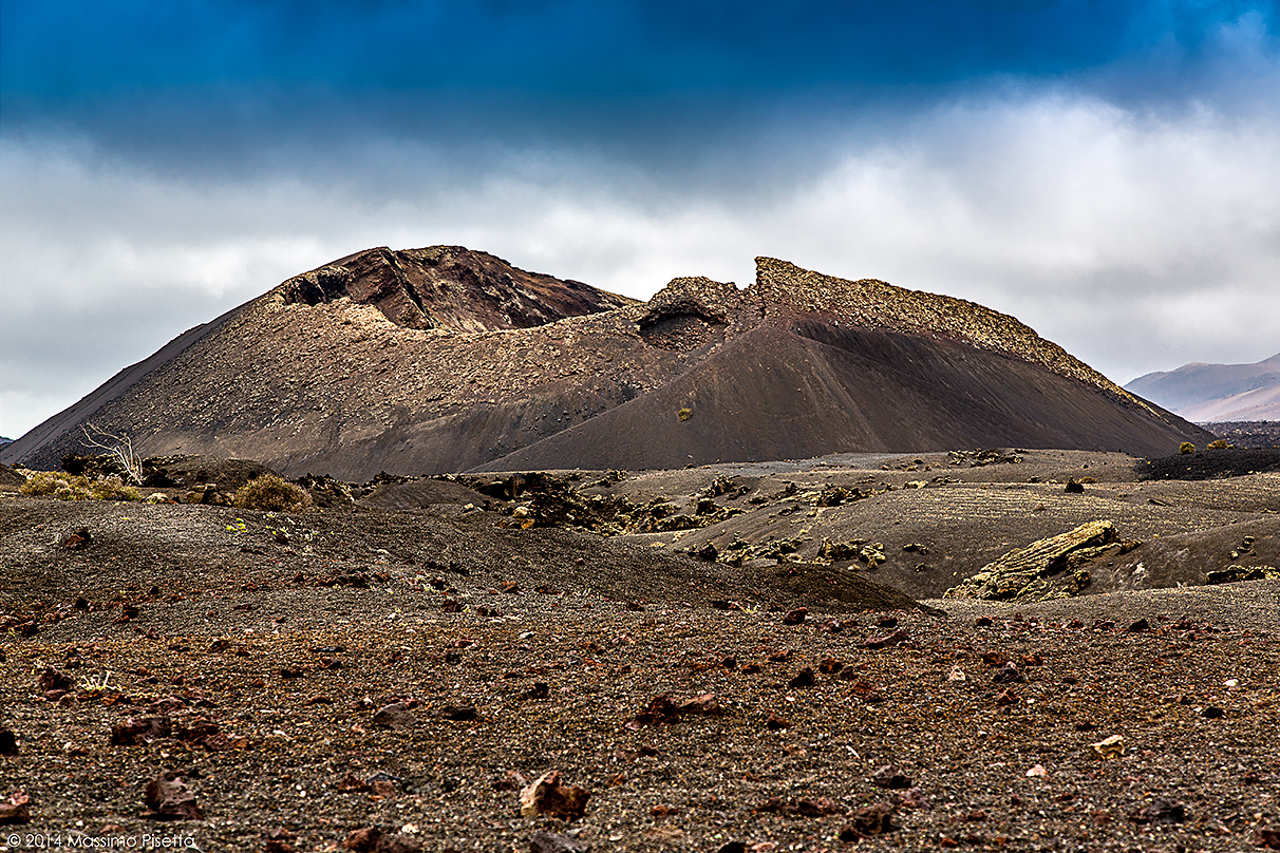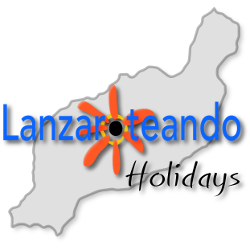An overview of the island of your next holidays.
Lanzarote is an island of the Canary archipelago (Spain) in the Atlantic Ocean. It is part of the province of Las Palmas and its capital is Arrecife. It is the second most populated island in the province of Las Palmas. It has about 155,000 inhabitants and with an area of 845.94 km² it is the fourth largest island of the archipelago. In the center-southwest of the island is the Timanfaya National Park, which is one of the main tourist attractions of Lanzarote.
The island its entirety, since 1993, a UNESCO biosphere reserve. The name of the island derives from the Genoese sailor Lanceloto Malocello, who visited it in the 14th century. The island of Lanzarote is divided into 7 municipalities: Arrecife, Haría, San Bartolomé, Teguise, Tías, Tinajo and Yaiza.
The formal name of the inhabitants is “lanzaroteño/a”, although the name “conejero/a” is used colloquially. The name “conejero” derives from a term used by the inhabitants of Puerto de la Cruz (island of Tenerife), this is due to the fact that the merchants of Lanzarote traded on this island with rabbit skins.
The special climate that distinguishes the island.
Thanks to its climate, Lanzarote is often called the island of eternal spring. The climate of Lanzarote is defined as subtropical in terms of temperatures and dry or sub-desert in terms of rainfall. The temperatures undergo small variations both between the different seasons and between day and night. The average temperature of the coldest month (January) is 17°C and that of the hottest month (August) is 24°C.

Spectacular landscapes with unique personality and natural spaces.
Lanzarote has a spectacular nature, both in terms of landscapes, these being one of its main tourist attractions, and in terms of the flora and fauna of the island. Five geographical landmarks mark the morphology of Lanzarote, giving it a unique personality and each of them hosts different landscapes. These are two mountain massifs of great antiquity, each located in the extreme north and south of the island (Famara-Guatifay and Los Ajaches); two areas of more recent volcanism, which make up the area of the Timanfaya volcano, in the center-south, the La Corona volcano in the north, with finally a strip of sand of marine origin that crosses the center of the island, in an area known as El Jable. These five spaces, together with the group of islets of the Chinijo Archipelago, north of the island, house most of the scenic charm of the island of volcanoes. The island has 13 natural spaces.
- National parks: Parque nacional de Timanfaya, Reservas naturales integrales and Reserva natural integral de Los Islotes.
- Natural parks: Parque natural del Archipiélago Chinijo and Parque natural de Los Volcanes.
- Natural monuments: Parque natural de La Corona, Parque natural de Los Ajaches, Parque natural de La Cueva de Los Naturalistas, Parque natural del Islote de Halcones and Parque natural de Las Montañas del Fuego.
- Protected landscapes: Paisaje de Tenegüime and Paisaje de La Geria.
- Sites of Scientific Interest: Los Jameos and Las Salinas de Janubio.

The eruption of Timanfaya and the transformation of the island.
In 1730, the largest eruption of the archipelago began in modern times, firing lava and slag for nearly six years and releasing a volume of material between 3 and 5 cubic kilometers. The testimony of the parish priest of Yaiza, Lorenzo Curbelo, reads as follows:
“On September 1th, 1730, between nine and ten in the morning, the land opened at Timanfaya, two leagues from Yaiza… and a huge mountain rose out of the earthly judgment.”
The island was completely transformed and for six years the lava spread to the southern area, covering a quarter of the island and filling the nearby plains with volcanic ash. In 1824 the eruptions started again from Timanfaya. Terrible famines occurred and a large part of the population was forced to emigrate. Since then the landscape has been transformed thanks to the agricultural techniques of cultivation on volcanic lapilli that the conejeros use to capture the humidity of the trade winds.
The most precious asset: the water.
The main obstacle that for centuries has conditioned the development of its people is the total absence of drinking water. The solution came in 1965 when the first desalination plant in the Canary Islands and in all of Spain was installed in Lanzarote. This plant was one of the first desalination plants on the planet.

Gastronomy and good food.
The cuisine of Lanzarote fits into the simple gastronomy of the Canary Islands. In the case of conejeros, however, the presence of seafood is greater, both fish and crustaceans, due to the island’s fisherman vocation. With them they prepare typical dishes such as el sancocho, la ropa vieja de pescado, el caldo de pescado, el salpicón de pulpo, los tollos o las jareas. There is no shortage of agricultural products on the island, mainly of the type that do not require water. Especially famous are onions, sweet potatoes, potatoes, lentils and courgettesand, as well as millet or corn. These foods are the basis of dishes and tapas such as las papas arrugadas con mojo, el caldo de millo, el caldo de papas, los potajes. They also serve as an accompaniment in recipes such as the typical puchero canario. In the case of cereals, be they wheat or millet, they have a particular relevance as they are used to make the ancestral gofio Canario, used as an ingredient in countless recipes.
Finally, the preparation of traditional desserts, such as las torrijas, el bienmesabe, las truchas de Navidad or el frangollo, should be noted.
The best accompaniment to the gastronomy of the island are the famous wines of Lanzarote, which have their own designation of origin, among which the Malvasia wine stands out.

Popular festivals and tradition.
The most rooted festival of the island is celebrated in the municipality of Tinajo, every September 15th in honor of the Vergine de los Dolores or de los Volcanes (patroness of the island of Lanzarote). People from all over the island participate in the pilgrimage, mostly dressed in the typical dress of Lanzarote. The other great island festival are the carnivals, almost always celebrated in February. The Arrecife Carnival, of marine origin, is the main festival of masks in Lanzarote and in addition to the massive outdoor night parties, it hosts the Reina del Carnaval, Drag Queen, murgas and comparsas competitions. In addition to popular festivals, Lanzarote’s cultural agenda is completed with a number of events, including the Malpaís performing arts festival, the Muestra de cine de Lanzarote and the Universidad de Verano de la isla.

Something about us.
Lanzarteando Holidays offers numerous holiday accommodation in Lanzarote. If you like nature, sport, beach life and you want to immerse yourself in an adventure that will leave a sign, do not wait and BOOK one of our apartment now at the best price on the web.
Source of the information summarized in the article: Wikipedia Spain.

